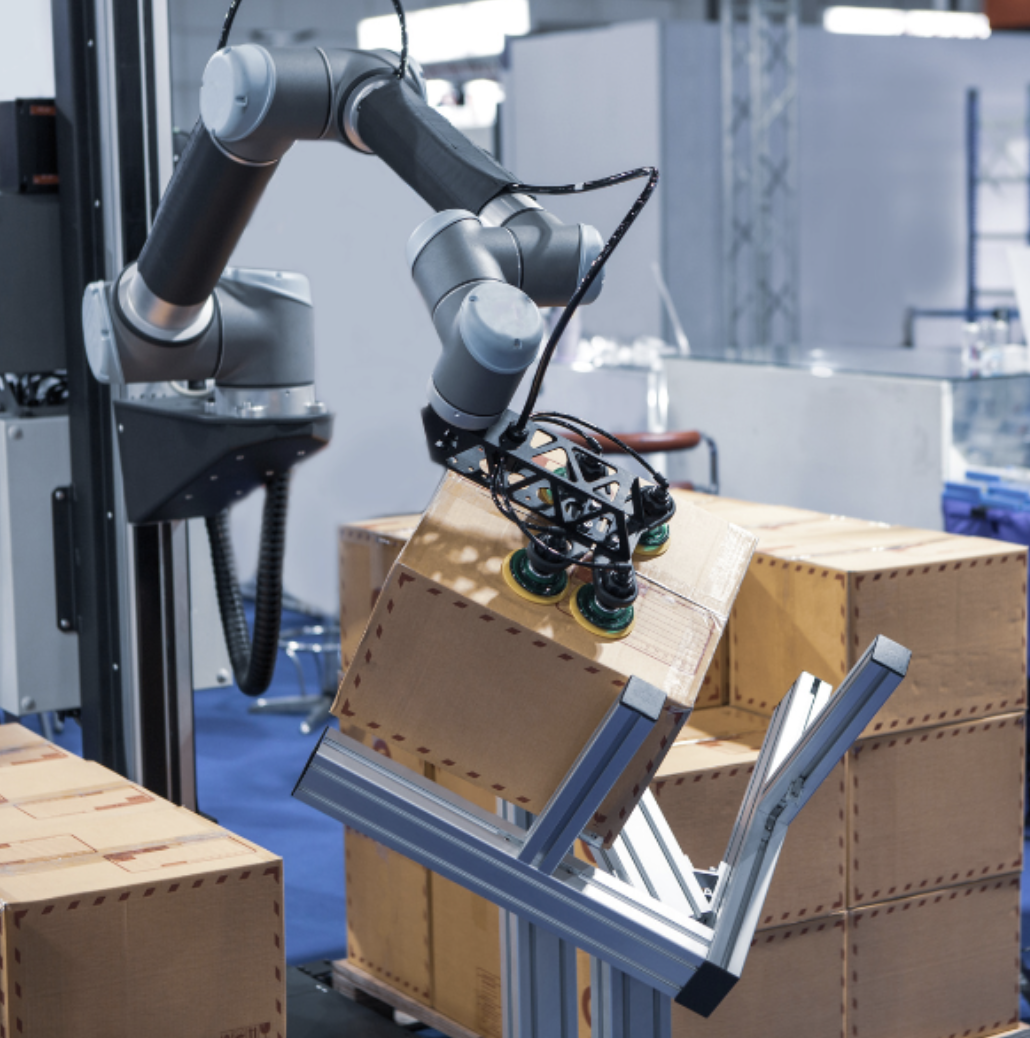While automation production has become a mainstay of manufacturing, a crucial and often overlooked area is the automation of material movement for both raw and finished goods.
Many manufacturers have made great strides over the past 20-30 years in automating the production of their goods. In many factories, human beings do not come into contact with finished product until well after they have been fabricated, extruded, or stamped. But manufacturing facilities have neglected to address how automation can be used after products have been made.
This is where the core of the problem inside manufacturing plants lies, especially in the Western World. While production in many cases is well automated, the material movement of both raw and finished goods is still very much left to human beings. Many of the unfilled jobs in the manufacturing sector lie in the material handling function – largely because these jobs are repetitive and mundane.
Per the US Bureau of Labor Statistics, there were over seven million hand laborers and material handling jobs in the US, with most being inside manufacturing and warehousing environments. What’s more interesting is that according to multiple sources, 35% of those employees will last fewer than 12 months in a role with a further 31% lasting between 13-24 months. In total, 66% of material handling jobs, or 4.6 million will need to be re-staffed throughout that rolling 24 monthperiod.
This is by no means a US-only issue, as we have seen similar staffing turnover issues in several European countries as well.To make matters worse for manufacturers, the demand for material handlers is expected to increase by 6% annually over the next decade. Much of the labor shortage plaguing manufacturers lies within this particular function. So what options are available to bridge this gap?
The good news for manufacturers is that the technological capability of robotics & automation has increased exponentially over the past decade, while the relative price points for these solutions have decreased substantially. These two positive data points are well-timed to address material handling labor shortages.
In reviewing the collective recommendations our firm has made to clients over the past 24 months, more than 70% of the time we find that basic material handling solutions are objectively the most financially beneficial investments manufacturers can make. In most cases, we see relative pay back periods between 8-18 months on these solutions, and for factories operating 2-3 shifts those benefits are only magnified.
The range of automation solutions available to address these needs is varied, but inevitably involves robotic pick & place solutions for the following tasks:
- Packing/stacking/bundling finished goods
- Vision systems to ensure quality control
- Autonomous mobile robots (AMR’s) for movement of filled totes & pallets
Integrating these solutions has become easier, and the use of artificial intelligence and machine learning help continuously improve these processes. In short, the range of solutions available and costs of implementing them has never been better.
The critical decision point for manufacturers is to target the right processes with automation solutions that make the most financial sense. Identifying which processes are relatively simple to implement with low costs and high benefits helps to set in motion a sequence where capital investments can be recycled across multiple projects where savings from the first project can be used to fund the second, and so on.
A mistake we’ve seen many make is funding the most complex processes first where costs are high, benefits are low, and payback periods are therefore extended. This approach ties up capital and becomes a barrier to funding projects with faster returns on investment. Equally important, is that funding the wrong projects first can decrease the desire to adopt automation as a long-term strategy. If the company is waiting for extended periods of time to recognize financial benefits it will only decrease the desire to embrace automation.
From a psychological standpoint, it’s critical to demonstrate the benefits of automation and build momentum within your team to more aggressively tackle future projects.
Most economic and demographic data available suggests that labor shortages are not a short-term trend. Most experts agree that there has been a permanent shift in the type of work human beings are willing to do over the long-term. With this new reality firmly in place, manufacturers can’t afford to not have automation as part of their production strategy, and one of the easiest places to start is where physical manufacturing ends and material handling begins.

